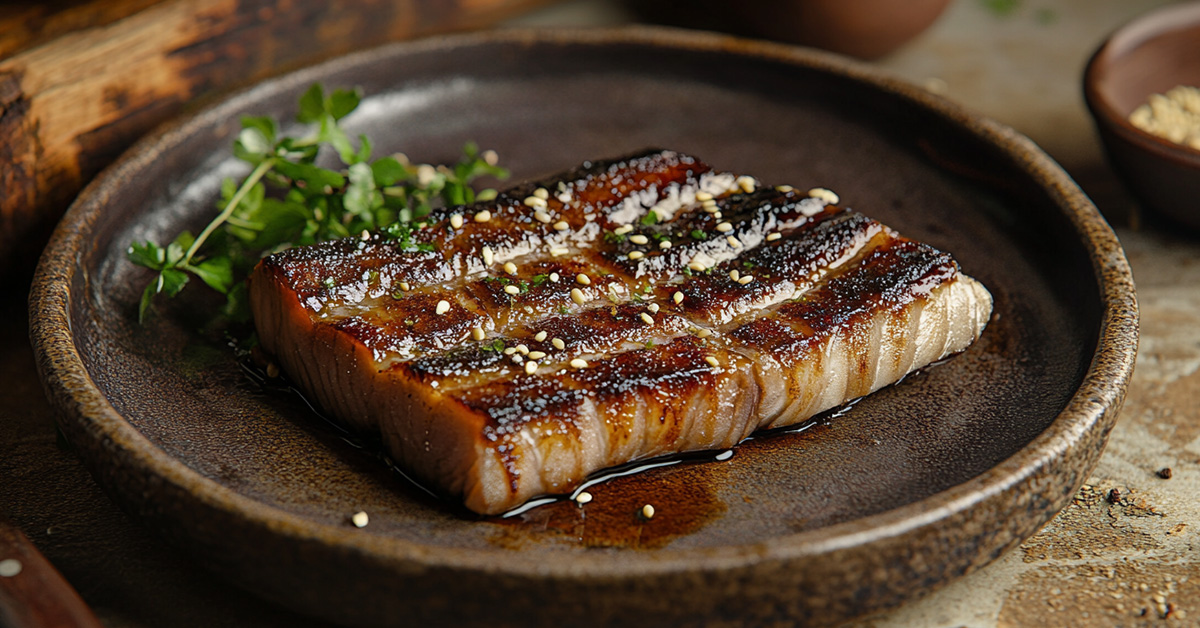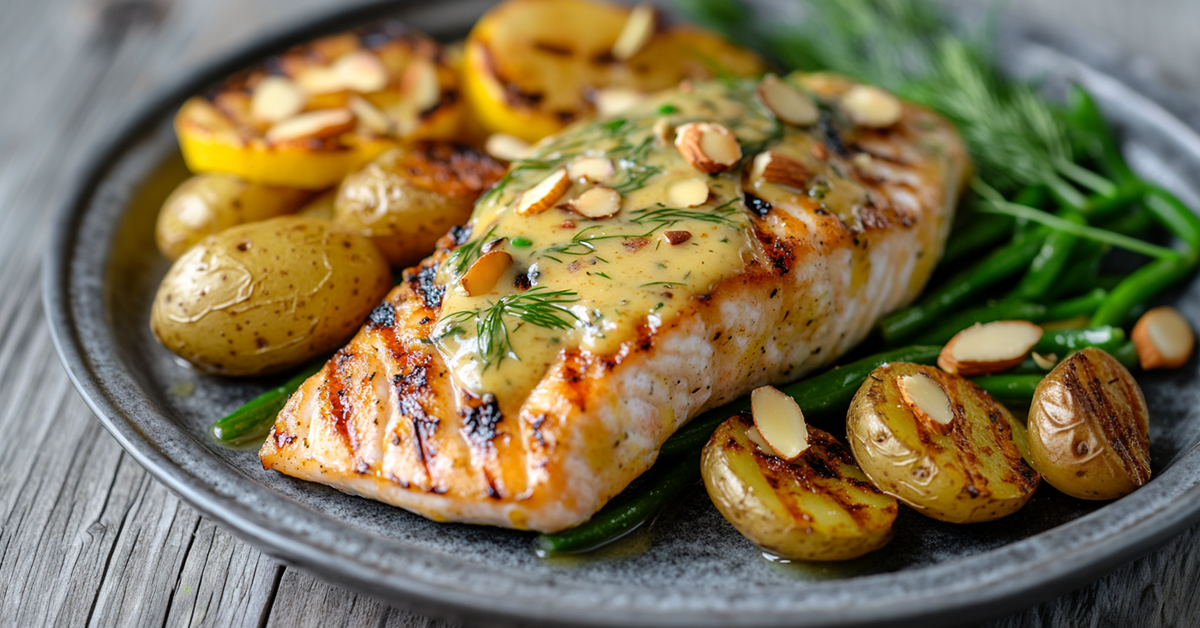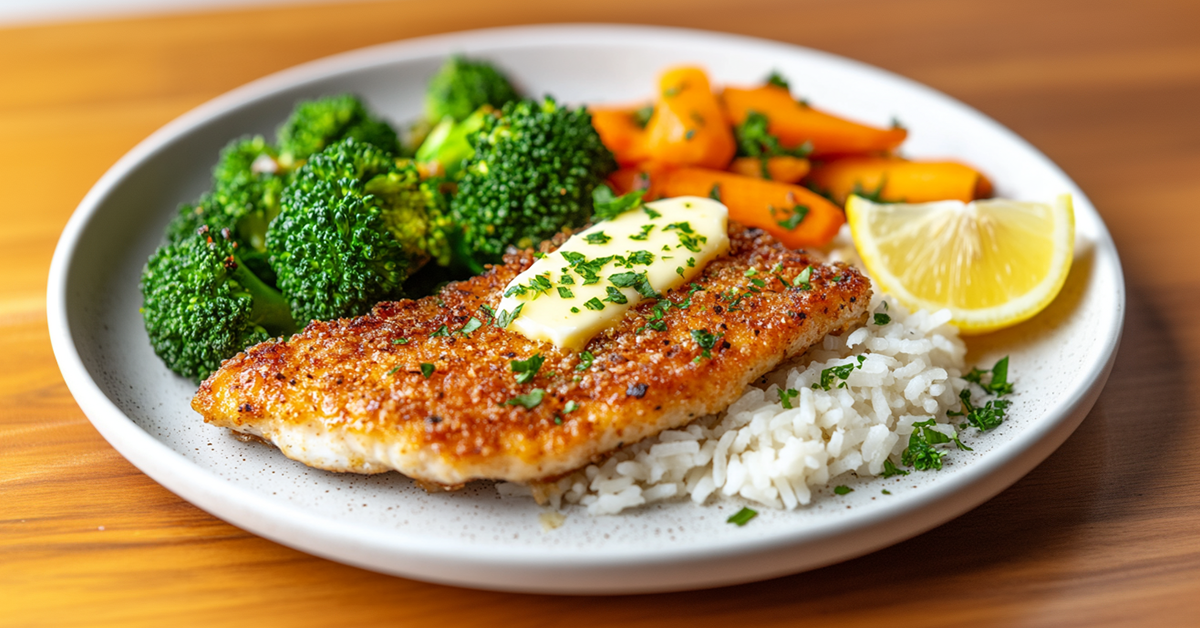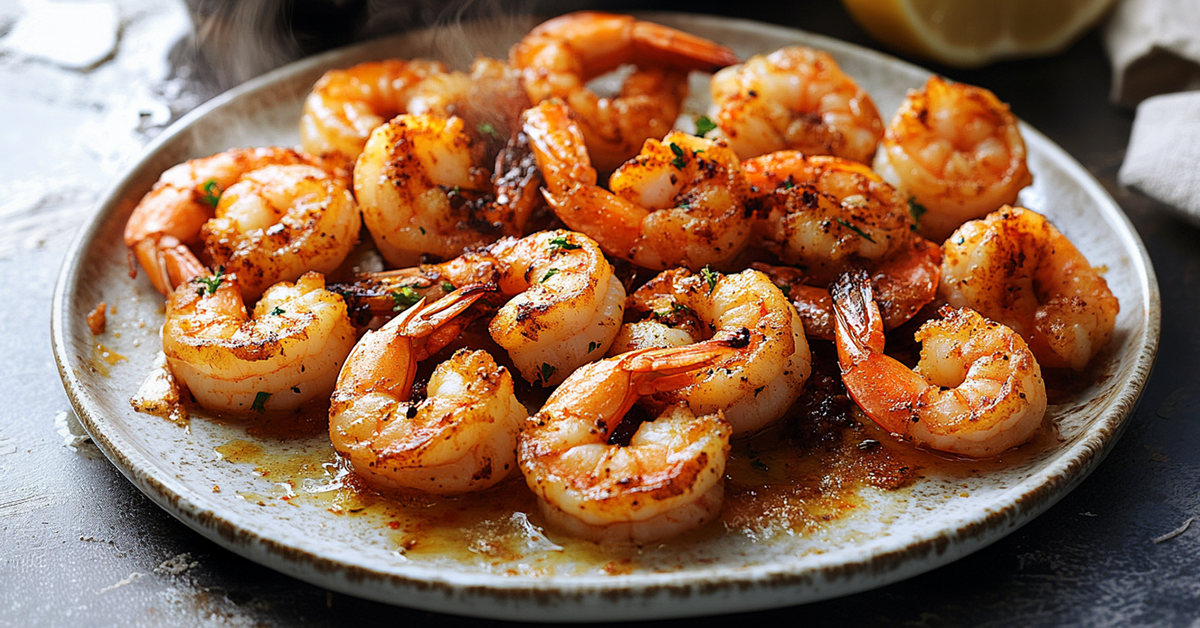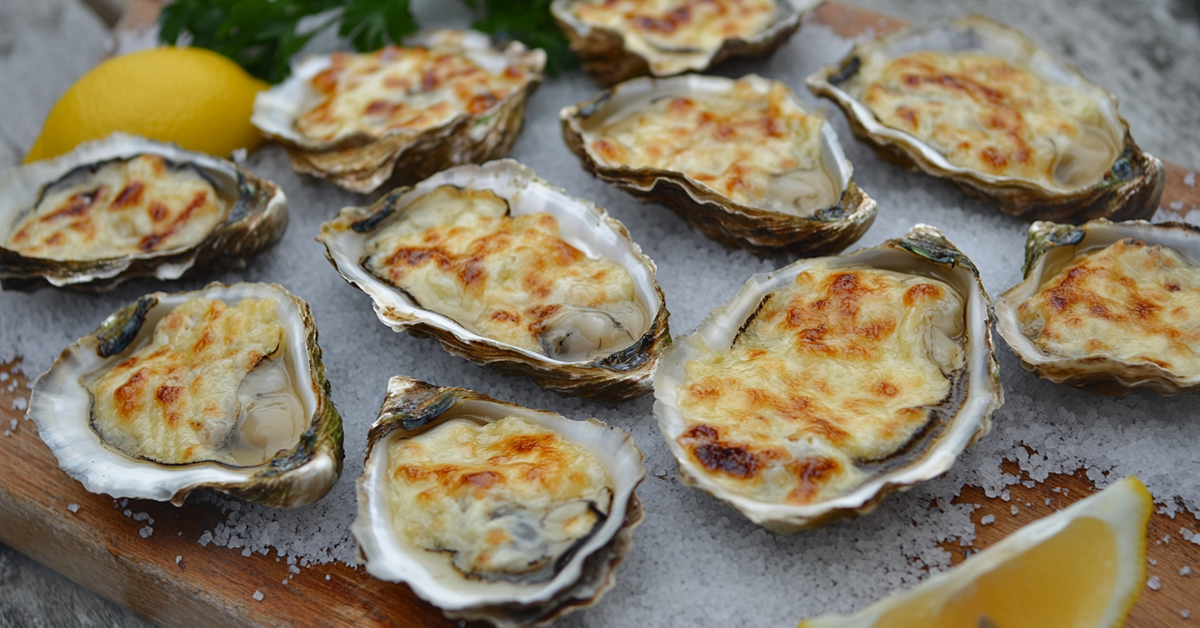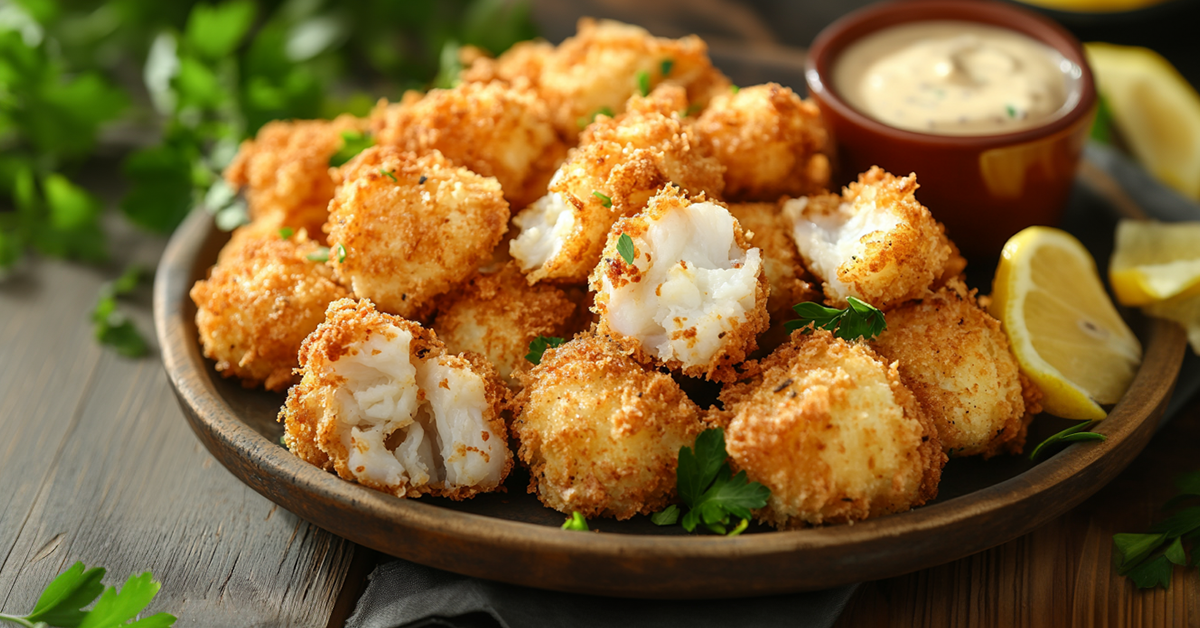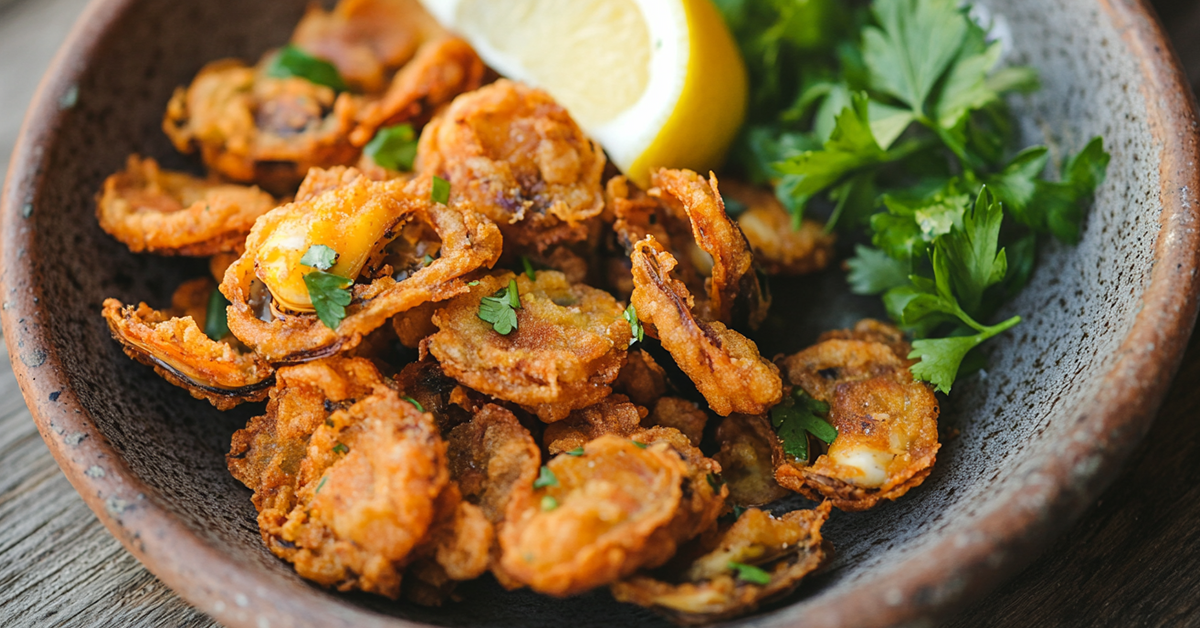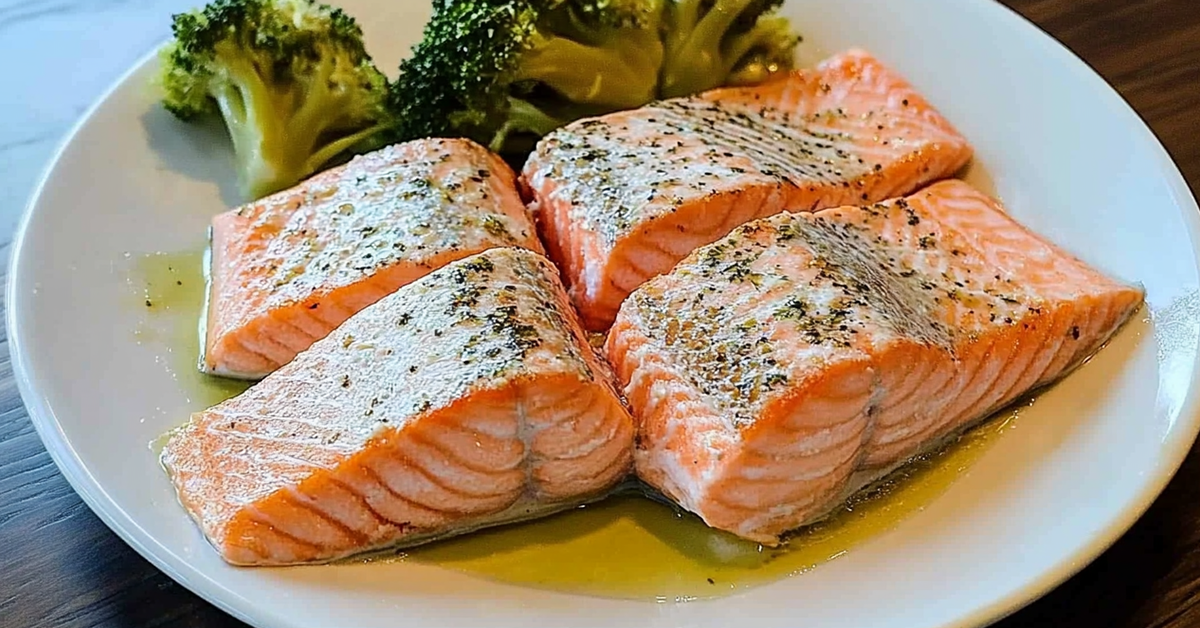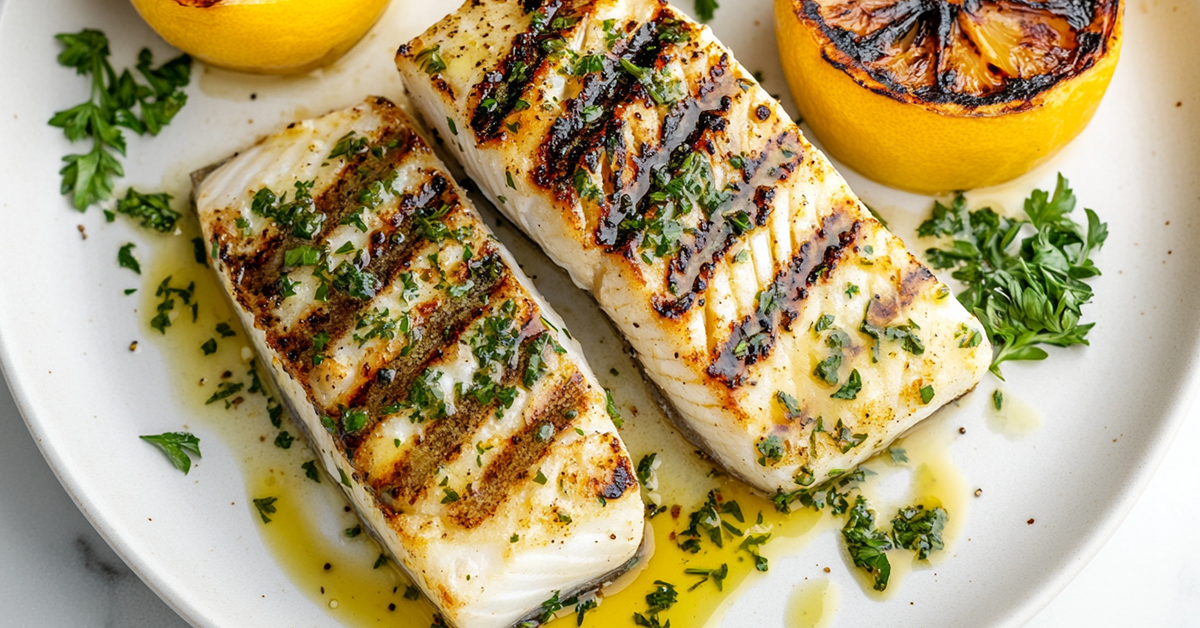Tuna belly is one of the most prized cuts in seafood cuisine. Its rich, buttery texture melts in your mouth. The premium cut costs by a lot more than regular tuna cuts – and with good reason too.
To become skilled at cooking perfect tuna steak, you need the right techniques. A classic seared ahi tuna or other tuna steak recipes will lift your culinary skills. This detailed guide shows you how to prepare an exceptional tuna belly recipe at home.
You’ll find how to select the finest tuna belly and learn perfect cooking techniques. The serving suggestions will impress your guests. The knowledge in this piece helps you create restaurant-quality dishes in your kitchen.
Table of Contents
Understanding Tuna Belly: A Gourmet Seafood Experience
Let’s take a closer look at the world of premium seafood. Finding tuna belly feels like discovering hidden treasure in the big ocean of culinary delights. The lower portion of the tuna holds this coveted cut that chefs know as “otoro” in Japanese cuisine.
Tuna belly’s special qualities make it stand out:
- A marbled appearance as with premium beef.
- An exceptionally tender texture that’s uniquely buttery.
- A rich, complex flavor profile that’s both subtle and intense.
- A higher fat content compared to other tuna cuts.
Tuna belly’s reputation in fine dining goes beyond taste. The complete sensory experience sets it apart. Properly prepared flesh should feel smooth and silky that melts in your mouth – an experience unlike any other seafood cut.
This premium cut shows its versatility in the kitchen. Chefs traditionally serve it as sashimi or in high-end sushi preparations. You can also create remarkable dishes through gentle searing or careful grilling. The key lies in thoughtful preparation that preserves its natural qualities.
Think of tuna belly as the wagyu of the sea. This luxury ingredient rewards careful handling and proper preparation techniques. The quality shines through in your final dish, whether you serve it as seared ahi tuna or use it in complex tuna steak recipes.
The natural richness of tuna belly means you don’t need complex preparations or heavy seasonings. Simple, clean flavors complement the fish’s natural taste and often give the best results.
The Culinary Significance of Tuna Steak Recipes
Tuna steak has become the life-blood of modern seafood cuisine. It offers endless possibilities for home cooks and professional chefs alike. You can turn this versatile ingredient from a simple grilled dish into an elegant fine-dining masterpiece.
Tuna steak recipes are exceptional because they work well with different cooking methods:
- Pan-searing – Creates a perfectly crispy exterior while maintaining a rare center.
- Grilling – Imparts a subtle smoky flavor.
- Tataki-style – Quick-searing and thin slicing for an elegant presentation.
- Sous-vide – Will give a precise temperature control for perfect doneness.
Tuna steak stands out in culinary circles because it connects different cooking traditions. The options are endless – from a classic seared ahi tuna with Asian-inspired seasonings to a Mediterranean-style tuna steak with herbs and olive oil.
Becoming skilled at tuna steak recipes depends on knowing how to control temperature. Unlike other seafood that needs thorough cooking, tuna steak tastes best with a rare or medium-rare center. This approach preserves the fish’s natural flavors and keeps its prized texture.
Seasoning can make or break your tuna steak dish. The fish’s natural flavor stands strong on its own, but thoughtful seasoning can lift it higher. Wasabi, sesame oil, or citrus zest complement rather than overpower the natural taste.
Time and temperature are vital when cooking tuna steak. A few seconds can mean the difference between perfectly seared and overcooked fish. Experience helps you develop a sense for that perfect moment when the tuna reaches optimal doneness – the exterior gets a nice sear while the center stays beautifully raw.
Read also: Kingklip Fish Recipe
Note that each cooking method brings out unique qualities in tuna steak. A quick sear creates contrast between the cooked exterior and raw interior. Gentle poaching gives a more uniform texture throughout. Pick your cooking method based on your final presentation goals and the cut of tuna you have.
Selecting the Perfect Tuna Belly for Your Recipe
The path to a perfect tuna belly recipe starts at your local fish market or specialty store. You need to know exactly what to look for. Quality selection makes all the difference before you even turn on the stove.
Your first quality indicator lies in the tuna belly’s appearance. Look for pieces with:
- A vibrant pink to deep red color.
- Visible marbling throughout the cut.
- A glossy, almost translucent appearance.
- Firm texture that springs back when touched.
- Clean, ocean-fresh aroma without any fishy smell.
Your nose serves as one of the most reliable tools while selecting fresh tuna belly. The aroma should remind you of the ocean – mild and pleasant. Any strong fishy odors or unusual smells should prompt you to look elsewhere.
A consistent color throughout the cut marks quality tuna belly. Natural variations exist, but avoid pieces with brown spots or discoloration. The fat marbling should appear as thin, white lines through the meat, like in a premium cut of beef.
Temperature plays a significant role in tuna belly purchases. The fish needs proper chilling, displayed on ice or in a refrigerated case. Flash-frozen tuna belly must maintain proper storage temperature to preserve its quality.
The source of your tuna matters during selection. Quality fishmongers and specialty seafood markets often share details about catch location and timing. This transparency indicates quality and eco-friendly fishing methods.
Your perfect cut needs proper storage after selection. Place your tuna steak in the refrigerator’s coldest section if you’re not cooking it immediately. Use it within 24 hours for optimal results. Frozen tuna belly should thaw slowly in the refrigerator to maintain its texture and flavor.
Note that quality tuna belly carries substantial weight for its size. This density indicates the rich, fatty content that makes tuna belly a prized cut for your seared ahi tuna dishes.
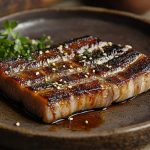
Fresh Tuna Belly Recipe
- Total Time: 3 hours 50 minutes
Description
Turn your carefully selected tuna belly into a culinary masterpiece with this delectable recipe that highlights this premium cut’s natural richness.
This grilled tuna belly recipe features a sweet and savory marinade that perfectly complements the fish’s natural flavors. The cooking process will give you a perfectly charred exterior while keeping the belly’s signature melt-in-your-mouth texture.
Ingredients
- 2 pounds tuna belly, cut into serving portions.
- 1 cup soy sauce.
- 2 tablespoons sugar.
- ¼ teaspoon ground black pepper.
- 2 tablespoons sesame oil.
- Juice of 1 lemon.
- 2 cloves garlic, minced.
- ½ teaspoon salt.
Instructions
- Prepare the Marinade: Mix soy sauce, sugar, black pepper, sesame oil, lemon juice, and minced garlic in a bowl. Stir until the sugar completely dissolves.
- Marinate: Put tuna belly in a zip-lock bag with the marinade mixture. Let it sit in the refrigerator for 3 hours and turn occasionally to distribute evenly.
- Prepare for Cooking: Take the tuna out from marinade and save the liquid. Boil the reserved marinade for 4-5 minutes until it thickens slightly.
- Grilling Process: Heat the grill and place the tuna on it. Cook each side for 3-5 minutes, basting regularly with the reduced marinade.
- Final Touches: Continue grilling until the fish flakes easily with a fork and develops slight caramelization on top.
Notes
Your safety comes first – always boil the marinade before using it as a basting sauce.
The marinade shouldn’t exceed 8 hours since acidic ingredients can affect the fish’s texture.
Cook the belly just enough to let the fat break down properly.
You can use olive oil instead of sesame oil, but you’ll miss out on the nutty flavor.
- Prep Time: 30 minutes
- Marinating Time: 3 hours
- Cook Time: 20 minutes
- Category: Seafood
- Method: Grilling
Health Benefits of Tuna Belly: Nutrition Packed Delicacy
Tuna belly tastes amazing and packs powerful health benefits that make it a nutritional powerhouse. Adding this premium cut to your diet doesn’t just please your taste buds – it helps keep people fed with vital nutrients.
Your body gets these benefits from tuna belly’s rich nutritional profile:
- Heart-healthy omega-3 fatty acids.
- High-quality protein (23g per serving).
- Essential vitamins B12, D, and E.
- Important minerals like selenium, iron, and magnesium.
- Beneficial antioxidants.
Reference: mynetdiary
The omega-3 fatty acids in tuna belly help reduce bad cholesterol (LDL) and lower your risk of cardiovascular disease. These fatty acids also boost your eye health. Studies show that eating tuna regularly can reduce the risk of dry eye by up to 68%. [Reference]
Weight Management Benefits Tuna belly fits perfectly into a weight-conscious diet. The rich taste comes with relatively low calories and high protein content, which keeps you full longer. Studies with adolescents proved that teens who ate lean fish like tuna lost more weight than those who didn’t eat fish.
Brain and Vision Support Tuna belly’s nutrients work wonders for your brain and eyes. Omega-3 fatty acids support retinal health and keep your vision sharp. These essential fats also play a vital role to reduce inflammation throughout your body.
Cancer-Fighting Properties The omega-3 fatty acids in tuna belly might slow tumor cell growth and reduce your body’s inflammation. This matters because chronic inflammation links to many types of cancer.
Nutritionists suggest eating tuna two to three times per week to get the best health benefits. Note that tuna belly should be part of a varied diet to get all the nutrients you need.
Read also: Breaded Grilled Fish
Pairing and Serving Suggestions
Let’s lift your tuna belly dining experience to new heights as you become skilled at perfect pairings and presentation. Creating a memorable meal starts with selecting flavors that boost the delicate taste of your perfectly prepared tuna steak without overpowering it.
Great wine choices can make your tuna belly recipe shine:
- Light to medium-bodied white wines (Pinot Grigio, Chablis).
- Crisp rosés from Provence.
- Light-bodied reds like Pinot Noir.
- Sparkling wines for special occasions.
Side dishes should highlight the rich, buttery nature of tuna belly. The fish pairs beautifully with crisp Asian-inspired slaws, pickled vegetables, or peppery arugula dressed in light citrus vinaigrette. Steamed jasmine rice or quinoa helps balance the fish’s richness and makes the meal more substantial.
Tuna belly shines with minimal sauce. A light ponzu or wasabi-infused soy dressing will boost natural flavors subtly. Your seared ahi tuna pairs well with ginger-scallion sauce or a simple citrus drizzle that adds brightness while preserving the fish’s natural taste.
Temperature contrast plays a vital role in presentation. Hot sides combined with chilled garnishes create an interesting mix. To name just one example, see how warm tuna steak comes alive with cool cucumber ribbons or chilled seaweed salad.
The presentation of premium cuts deserves extra attention. Warmed plates will keep your tuna belly at the perfect temperature. A sprinkle of micro greens, edible flowers, or toasted sesame seeds adds visual appeal and texture.
The perfect dining experience needs good timing. Prepare cold elements ahead and finish hot sides just as your tuna steak leaves the heat. This coordination means every element reaches the table at its best moment.
Read also: Opah Fish Recipe
Conclusion: Mastering the Art of Tuna Belly Cuisine
To enhance the dining experience even further and take your enjoyment of the tuna belly to new heights, it is worth considering the addition of a touch of acidity. This will help to balance out the richness of the dish and provide a delightful tanginess that will tantalize your taste buds. One simple way to achieve this is by squeezing a fresh lemon over the seared ahi tuna, allowing the citrusy notes to cut through the fatty goodness. Alternatively, you could drizzle a balsamic reduction over the tuna, adding a slightly sweet and tangy flavor profile that complements the fish beautifully.
In addition to incorporating acidity, experimenting with different textures can truly elevate the dish. For example, serving the seared ahi tuna on a bed of crispy julienned vegetables not only adds a satisfying crunch but also provides a refreshing contrast to the tender fish. Another option is to pair the tuna with a creamy avocado puree, creating a luxurious and velvety texture that complements the meatiness of the belly.
To add the finishing touches and bring the flavors to life, don’t forget to garnish your dish with a sprinkle of sea salt or a pinch of furikake. These simple yet impactful additions will enhance the overall taste and add a final touch of elegance to your culinary creation. So go ahead and explore these suggestions to elevate your dining experience and savor every bite of your seared ahi tuna.

